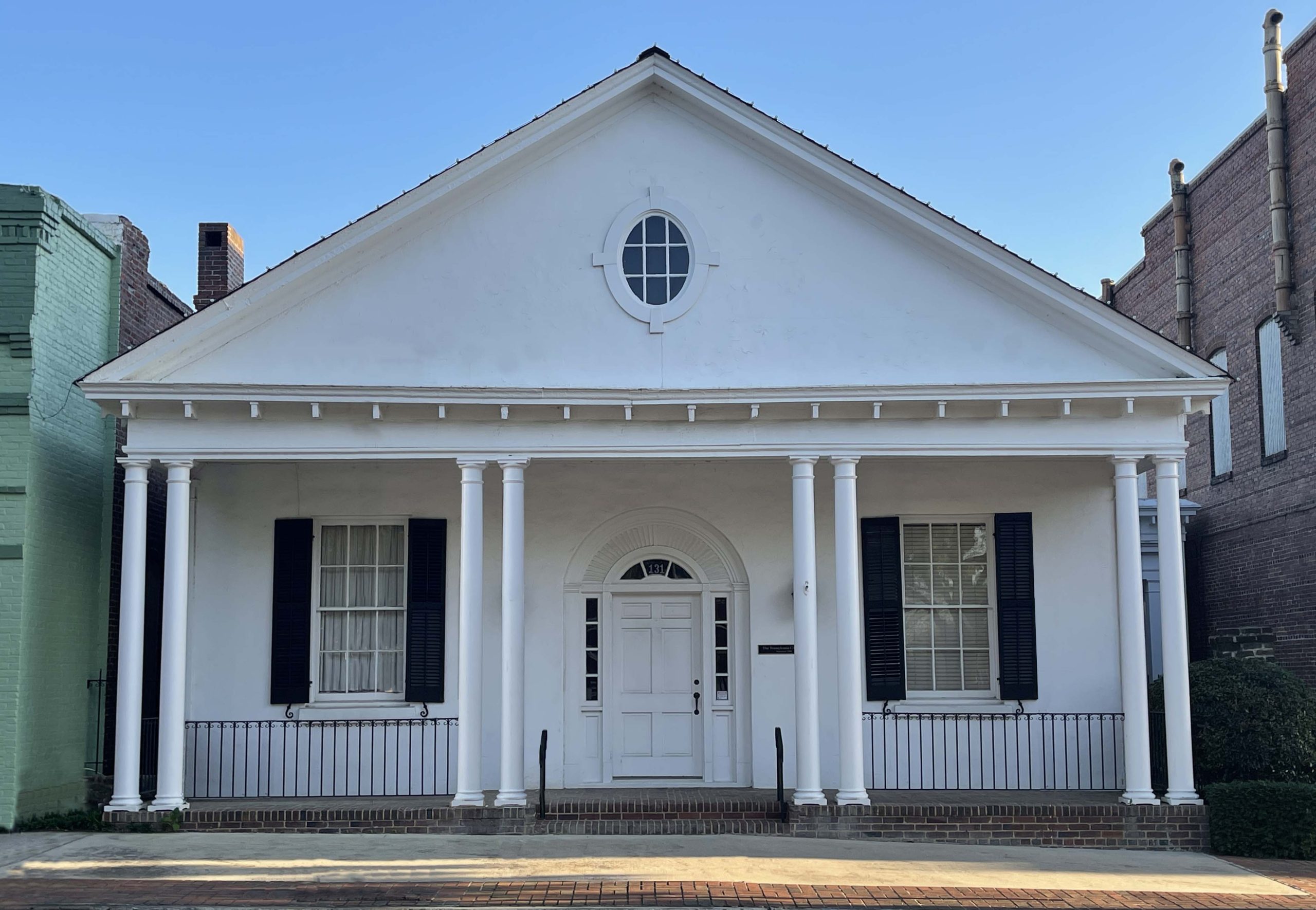

The Transylvania Club was organized on October 23, 1908, in the home of the founder, Mrs. C. B. Chapman. Originally the club had 26 charter members with their motto being “Service, not for ourselves but for others”. At the Club’s second meeting in January 1909, President Mary Tarbutton recommended, and the members voted that the Club establish a public library as its primary project. President Tarbutton’s dream for a library caught fire in the hearts of the club members. During the months that followed, the energetic club members organized many different types of fundraisers to benefit the proposed library including silver teas, musicals, home talent plays, and ice cream festivals.
Through the hard work of the Transylvania girls and the benevolence of the Friends of the Library, the little library grew and soon expanded to a collection of over 7,000 volumes. The library opened May 12, 1909 in the Masonic Building which was located on the town square. It was housed there until 1921 when a fire destroyed the building and most of its contents. Undaunted, the members began anew, and in 1925 the Transylvania Club bought the antebellum home and law office of Colonel Richard Lee Warthen for $6,000. This building, also located on the square in Sandersville, continued to house the library until 1998.
The Transylvania Club‘s continued support of the library was so successful that a new building with state-of-the-art technology was built in 1998. In the ninetieth year since the Club’s founding, the Rosa M. Tarbutton Memorial Library (image far right, above) opened. The new library was named for one of the Club’s most beloved members. The Rosa M. Tarbutton Memorial Library, located on South Harris Street, is now the official public library of Washington County. Today, the Library has a collection of over 48,000 volumes, and the last fiscal year the facility had 50,919 visitors. Today the Transylvania Club continues to be a major benefactor of the Rosa M. Tarbutton Memorial Library through the proceeds earned on the sale of the Historic Georgia plates. The previous home of the Sandersville Public Library is maintained by the Club as the Transylvania Building. The Club still meets in part of the building and leases the newer part to a local business.
In 1932 Louise Irwin conceived and executed the design of the Georgia Historical Plates as part of the upcoming 1933 Georgia Bicentennial Celebration. She suggested the project to the Transylvania Club as a celebration of the Bicentennial and the 25th anniversary of the Club, and as a possible moneymaker for the Club.
Wedgwood in London agreed to produce the plates, but required a $1,500 payment in advance. Three gentlemen, Mr. C.D. Shelnutt, Mr. C.F. Irwin, and Mr. B.J. Tarbutton, came forward and underwrote the entire sum.
The plates were to be executed by Wedgwood from the original Queensware formula which was first made in 1762 by Josiah Wedgwood for Queen Charlotte and named in her honor. The plates were originally produced in two sizes, dinner, and salad, and were available in blue, pink and mulberry.
Miss Irwin designed a distinctive border that could only belong to Georgia. Each center subject was encircled with a design of cotton, peaches, Cherokee roses, and boughs of long-leaf pine. The seal of Georgia and the state motto: "non sibi sed aliis" appear at the lower center of the border.
The border is interspersed with five insets: Bethesda, the first orphanage in America; the residence of Crawford W. Long; Savannah, the first steamship to cross the ocean; the ruins of Fort Frederica; and Liberty Hall, home of Alexander H. Stephens, Vice President of the Confederacy.
The center views are General James Oglethorpe; the Georgia Trustees receiving Oglethorpe and the Indians in London; John Wesley teaching the Indians; Wesleyan College; University of Georgia; Richmond Academy; Nancy Hart capturing the Tories; the burning of Papers in the Yazoo Fraud; the Old Capitol in Milledgeville; the present Capitol in Atlanta; Georgia's Revolutionary War Heroes; Georgia's Civil War Heroes.
In September 1935 the first shipment of Georgia Plates left the English dock. Since they were first issued, thousands of Georgia Plates have been sold, making the sale of the plates the largest single source of revenue for the Sandersville Public Library and the Transylvania Club.
On February 19, 1974, Governor Jimmy Carter signed the General Assembly's resolution number 573 making the plates the Official Historical Plates for the State of Georgia.
Georgia Historical Plates are now being produced in the dinner size and are currently being issued in pink and in blue.
In 2015, the Transylvania Club was proud to introduce a new salad plate designed by Brian Moncus of Sandersville. The new plate is available in pink and blue and perfectly complements the dinner plates so lovingly created by Louise Irwin eighty years ago.